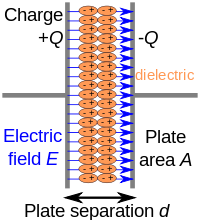
Photo from wikipedia
The outcome of an electron-transfer process is determined by the quantum-mechanical interplay between electronic and vibrational degrees of freedom. Nonequilibrium vibrational dynamics are known to direct electron-transfer mechanisms in molecular… Click to show full abstract
The outcome of an electron-transfer process is determined by the quantum-mechanical interplay between electronic and vibrational degrees of freedom. Nonequilibrium vibrational dynamics are known to direct electron-transfer mechanisms in molecular systems; however, the structural features of a molecule that lead to certain modes being pushed out of equilibrium are not well understood. Herein, we report on electron transport through a porphyrin dimer molecule, weakly coupled to graphene electrodes, that displays sequential tunneling within the Coulomb-blockade regime. The sequential transport is initiated by current-induced phonon absorption and proceeds by rapid sequential transport via a nonequilibrium vibrational distribution of low-energy modes, likely related to torsional molecular motions. We demonstrate that this is an experimental signature of slow vibrational dissipation, and obtain a lower bound for the vibrational relaxation time of 8 ns, a value dependent on the molecular charge state.
Journal Title: Physical review letters
Year Published: 2022
Link to full text (if available)
Share on Social Media: Sign Up to like & get
recommendations!